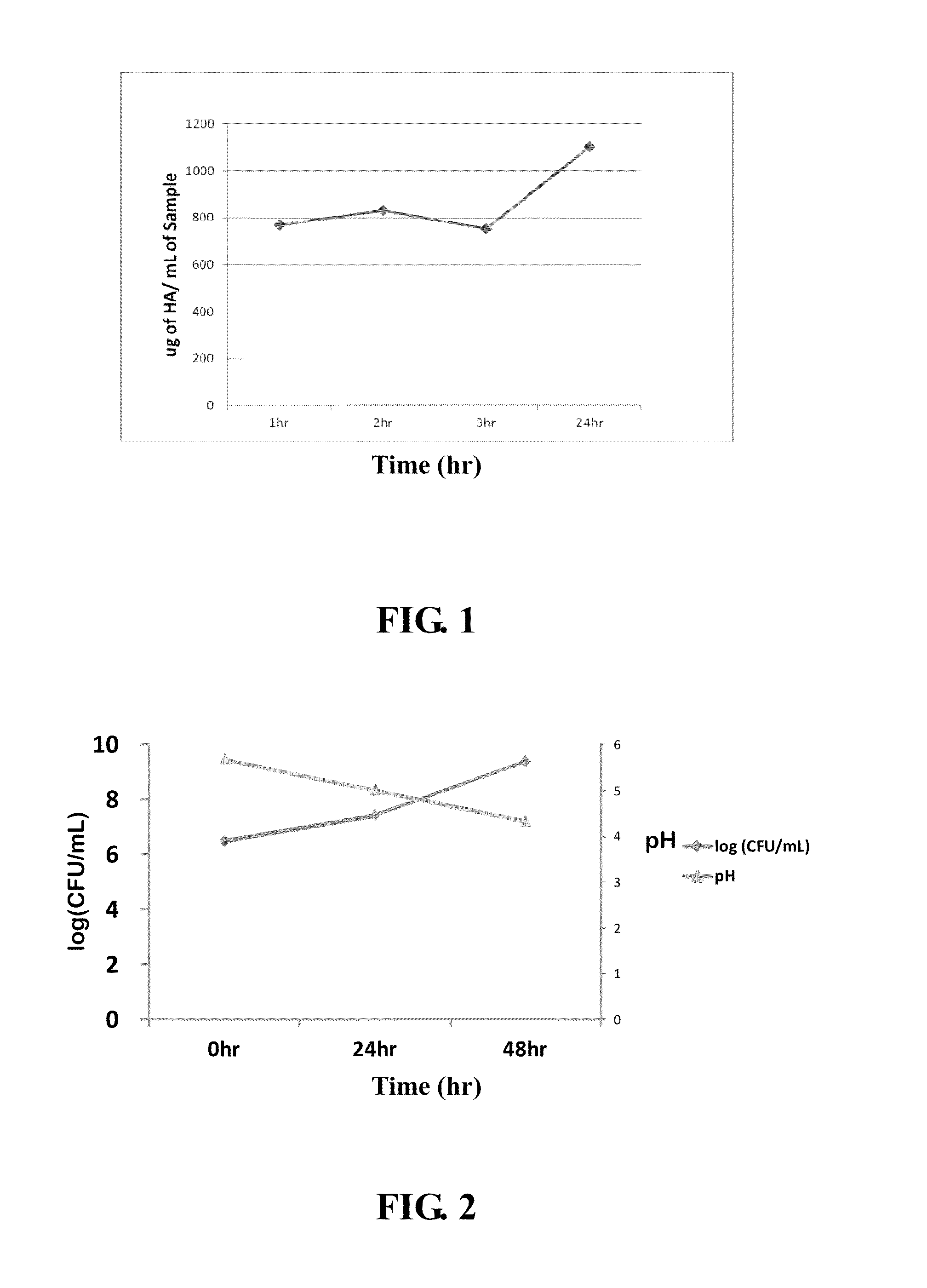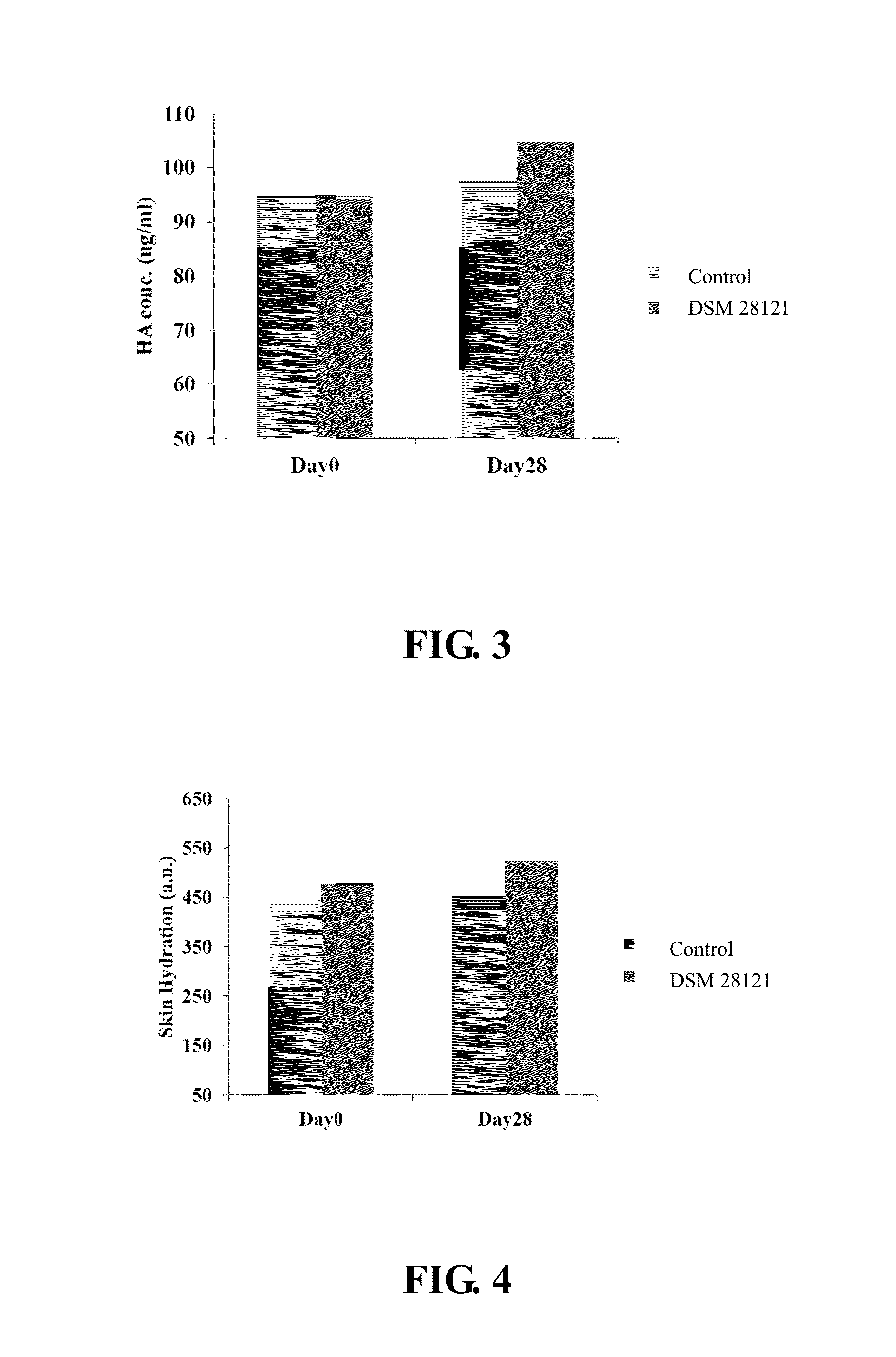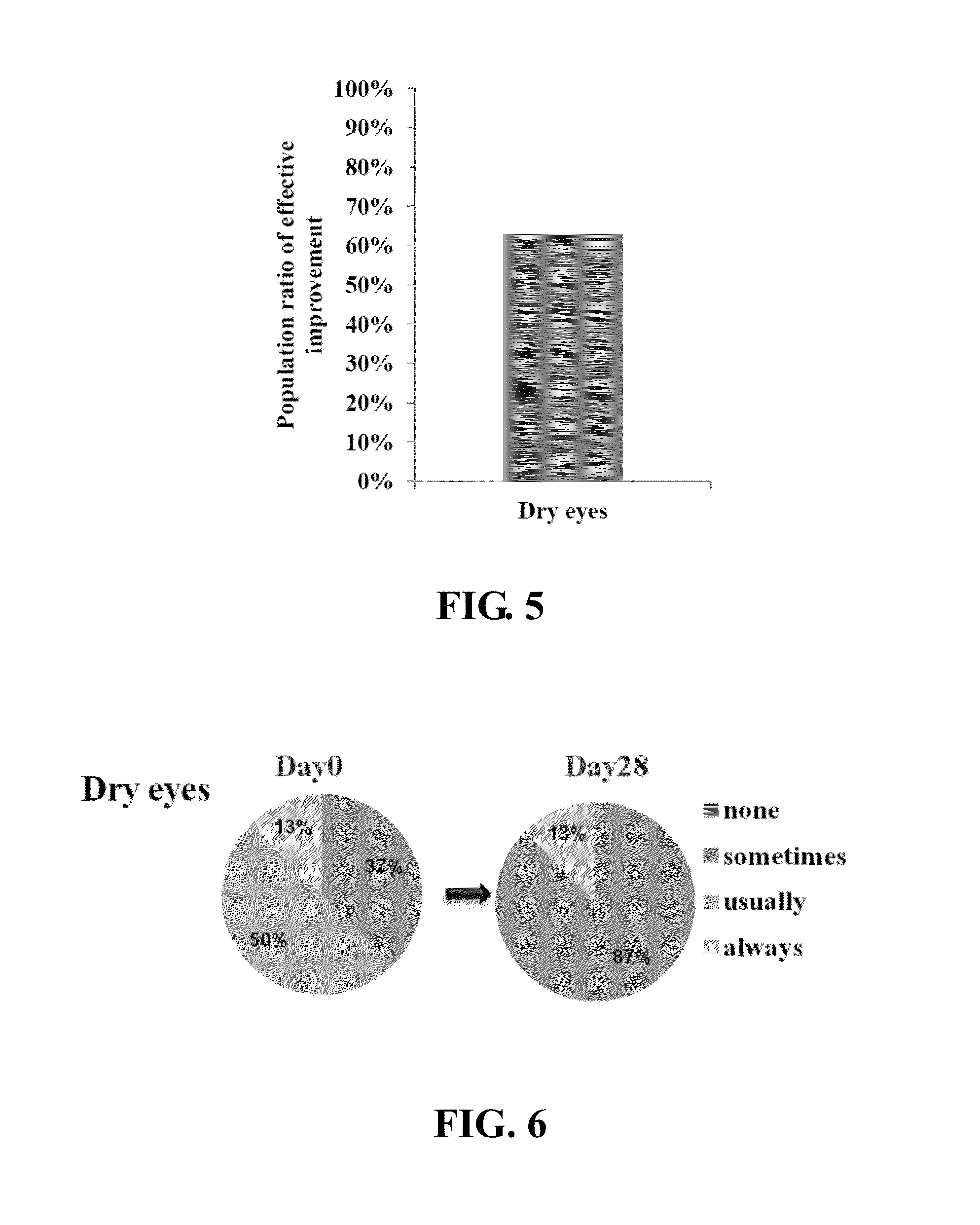Method of enhancing hyaluronic acid secretion using probiotic strain
a probiotic and hyaluronic acid technology, applied in the field of new probiotic strains, can solve the problems of increasing the number of people who need hyaluronic acid, the loss of hyaluronic acid almost every day, and the increase of the hyaluronic acid content in the blood of the subject, so as to increase the number and increase the hyaluronic acid conten
- Summary
- Abstract
- Description
- Claims
- Application Information
AI Technical Summary
Benefits of technology
Problems solved by technology
Method used
Image
Examples
example 1
Isolating the Probictic Strain from Breast Milk
[0039]Streptococcus thermophilus DSM 28121 is isolated from healthy human breast milk. Adequate dilutions of the fresh breast milk samples are spread on MRS-Cys agar plates for isolation of lactobacilli spp. and Streptococcus spp. The plates were incubated for 48 h at 37° C. in anaerobic conditions. After incubation and counting, between 5 and 10 isolates from were selected from the agar plate including at least 1 representative of each colony morphology type. They were observed by optical microscopy to determine their morphology and Gram staining.
example 2
Screening of Bacteria Strain
2.1 Biochemical Identification
[0040]Gram's stain used to classify bacteria in which a bacterial specimen is first stained with crystal violet, then treated with an iodine solution, decolorized with alcohol, and counterstained with safranine.
[0041]16S rDNA sequences are very little difference in the same bacterial species because each distinct microbial species has unique DNA sequences, therefore, the present invention uses 16S rDNA to identify the bacterial species,
[0042]The present invention identifies the isolated bacterial species by using broad-range 16S rDNA polymerase chain reaction (Simo Nikkari, Fred A. Lopez et al., Emerging Infectious Disease Journal 2002, 8, 188-194). The isolated bacteria colonies were collected and the DNA extracted using TACO™ Total DNA Extraction Kit (GeneReach, Taiwan). The 16S rDNA sequences of bacteria were analyzed with PCR methods using the universal primer as following: fD1 mod (5′-AGAGTTTG...
example 3
Artificial Intestinal Solution (AIS) Module (In Vitro)
[0044]The artificial intestinal solution (AIS) is made based on the formulation proposed by Hasjim et al (Jovin Hasjim, Gautier Cesbron Lacau et at., Biomacromolecules 2010, 11, 3600-3608) with modifications. In the embodiment, the artificial intestinal solution is included digestive enzymes include 8 mg / mL pancreatin, 13 U / mL a-amylase and 1.12 U / mL amyloglucosidase are added to 0.2M acetate buffer (0.49 mM MgCl2, 200 mM CaCl2, pH6.0). The sterilized MRS broth is then added to AIS that mimics the general food intake as nutrients for bacterial growth in the intestine. The inoculation of Streptococcus thermophilus DSM 28121 is at human body temperature 37° C. to create the artificial intestinal environment. The cultured medium is collected at various time point to monitor the bacterial growth and HA production. The growth of bacterial culture is measured using conventional plate count method. The culture is collected at various ti...
PUM
 Login to View More
Login to View More Abstract
Description
Claims
Application Information
 Login to View More
Login to View More - R&D
- Intellectual Property
- Life Sciences
- Materials
- Tech Scout
- Unparalleled Data Quality
- Higher Quality Content
- 60% Fewer Hallucinations
Browse by: Latest US Patents, China's latest patents, Technical Efficacy Thesaurus, Application Domain, Technology Topic, Popular Technical Reports.
© 2025 PatSnap. All rights reserved.Legal|Privacy policy|Modern Slavery Act Transparency Statement|Sitemap|About US| Contact US: help@patsnap.com



